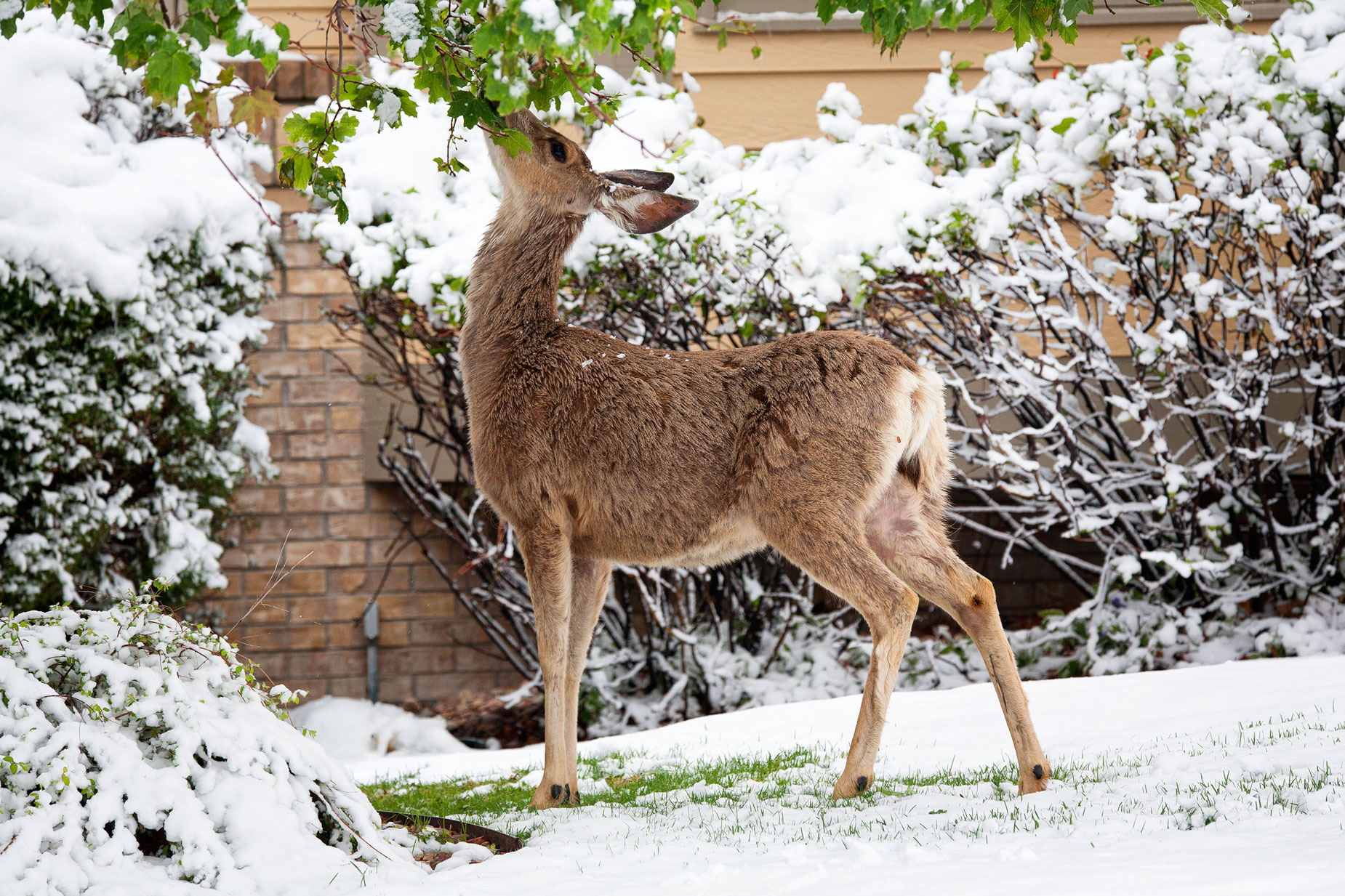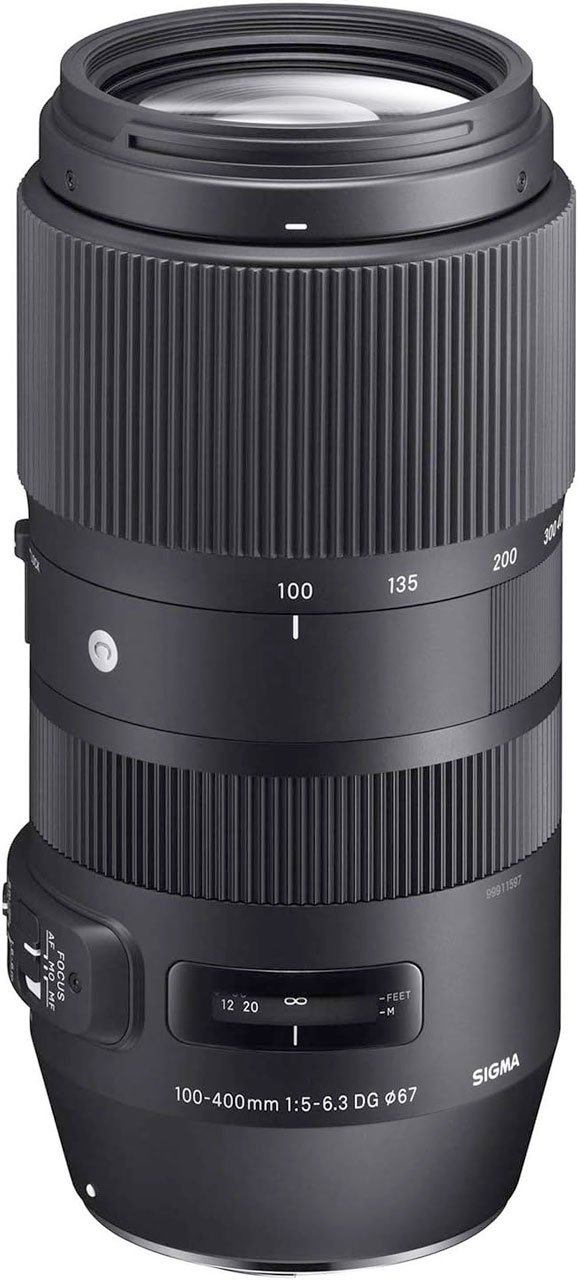A few years ago, I conducted a workshop at the FOTOfusion conference in Florida called “Right in Your Own Backyard.” The images I showed the audiences during the presentations were based on a premise I’ve long held that you needn’t travel halfway around the world to make photographs when great photo ops are seemingly closer to home.
Today’s Post by Joe Farace
I don’t have to take a trip around the world or be on a yacht in the Mediterranean to have happiness. I can find it in the little things, like looking out into my backyard and seeing deer in the fields. —Queen Latifah
I am anything but a nature photographer but sometimes wildlife just walks into my yard, as was the case with this young mule deer (Odocoileus hemionus) that was photographed, to be more specific from my front yard.
This species of deer are named because of their large ears, which resemble those of a mule. This young one doesn’t have any antlers showing yet, so maybe she’s a doe. Several subspecies include the black-tailed deer and related white-tailed deer (Odocoileus virginianus) that can be found throughout most of North America, east of the Rocky Mountains and in the valleys of the Rocky Mountains northward from Idaho and Wyoming. Mule deer, on the other hand, are typically found on the western Great Plains, in the Rocky Mountains and in my yard where they can often be found snacking on my bushes and trees and in some cases rubbing their antlers on the trunks of my aspen trees, finally killing them—the trees that is. Yes, these little cuties killed one of the beautiful aspen trees in my backyard last year and I had to have it removed, a costly process.

How I made this shot: As the scouts say, “Be Prepared” and sometimes I’m only semi-prepared. Several times a day individual and groups of mule deer stroll leisurely across Daisy Hill on their way to find nourishment, usually eating the leaves on my trees and landscaping.
This young mule deer doe is enjoying a repast on my neighbor’s trees (instead of mine.) I liked the way Sigma’s 100-400mm f/5-6.3 DG OS HSM lens rendered the deer and a bit of the tree in sharp focus, with the bushes and house in the background just slightly softer placing the viewer’s emphasis on the deer. She was photographed with a Canon EOS 5D Mark I that was set in Program mode with the lens at 302mm and an exposure of 1/400 sec at f/7.1 and ISO 400.
The Lens Used Was…
 Sigma’s 100-400mm f/5-6.3 DG OS HSM lens ($799) is part of the company’s Contemporary series that the company says blends “refined optical design” with “compact and lightweight construction.” It’s available in Canon, Nikon or Sony mounts and is designed for full-frame DSLRs but can also be used with APS-C sensor cameras, where it produces an equivalent field-of-view of 150-600mm.
Sigma’s 100-400mm f/5-6.3 DG OS HSM lens ($799) is part of the company’s Contemporary series that the company says blends “refined optical design” with “compact and lightweight construction.” It’s available in Canon, Nikon or Sony mounts and is designed for full-frame DSLRs but can also be used with APS-C sensor cameras, where it produces an equivalent field-of-view of 150-600mm.
The lens is constructed from “Thermally Stable Composite” material—OK, it’s plastic—but doesn’t feel plasticky. The mount is brass and has rubber sealing. making the lens dust and splash resistant. To reduce chromatic aberrations and color fringing throughout the zoom range, the optical design incorporates four SLD (Super Low Dispersion) glass elements that have Super Multi-Layer Coating to increase contrast. The front element has a 67mm filter size and features a water- and oil-repellent coating. The lens has a nine-blade rounded diaphragm that produces smooth bokeh.
It can focus as close as 5.25-feet and while may not produce true 1:1 ratio macro images that doesn’t mean you can’t try. Autofocus is fast, smooth, and quiet thanks to a Hyper Sonic Motor that permits manual focus override, although you may first want to set the Focus controls on the lens to “O” for override to do that. Other controls on the barrel include focus distance limiting, optical stabilization, and custom. The built-in stabilizer offers two settings: One for general handheld use and the other for panning.
If you enjoyed today’s blog post and would like to buy Joe a cup of Earl Grey tea ($2.50), click here